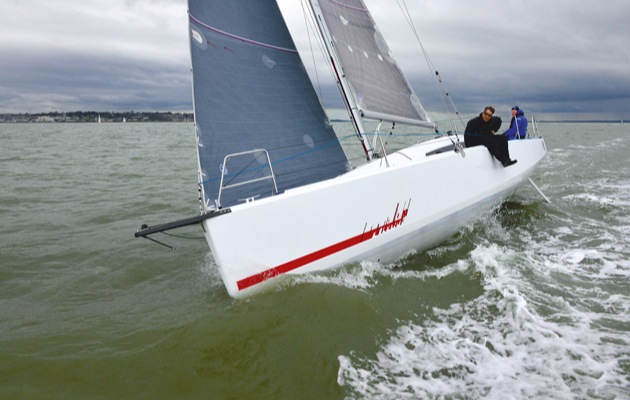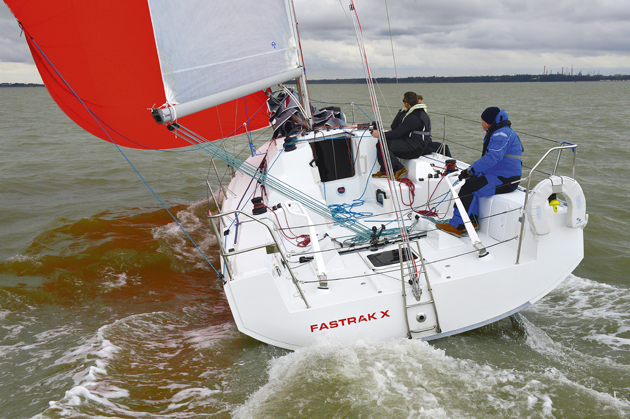The Sun Fast 3600 was consciously designed to up the ante for short-handed racing and cruising, but can any 36-footer appeal to both full and short-handed crews? Matthew Sheahan finds out

Photos: Lester McCarthy
Conditions for our test were light to start with, but this simply demonstrated how well she can ghost along. There is nothing sticky about this boat – in just 8 knots of breeze we were fetching at 6 knots with ease.
Although the breeze didn’t build beyond 16 knots, we did push her hard when reaching, albeit with a downwind kite, which heeled her excessively, but helped when we attempted to trip her up deliberately. Getting her to falter was hard work and involved getting the rudder in the turbulent flow from the back of the camera boat, but eventually she did give way.
Even then she refused to lie down. The second the heel reduced a shade and with the leeward of the two rudders still properly immersed and working, we bore off and regained control.
This is just one of several features that will make her particularly appealing for short-handed sailors. Like driving a 4×4 with traction control, she’s sure-footed and nimble with it.
Her deck layout is also impressive. Her overall configuration offers a wide open area towards the stern and in the helmsman’s zone while further forward the cockpit narrows to bring control lines closer to the centreline as well as providing seating and cockpit coamings.

The layout of her wide open cockpit that is particularly impressive for striking a balance between the needs of short-handed and full crews
The deck gear itself is high quality, with mainly Harken and Spinlock equipment throughout. The positioning of leads, winches and clutches suggest she would be as comfortable to sail with a full crew as she is convenient for just two.
I particularly liked details such as the giant foot-chocks for the helmsman and the proximity of the coarse and fine-tune mainsheet as well as the backstay controls. With these lines to hand the helmsman can manage the power in the rig with ease.
I also liked the deck-mounted cam cleats for the spinnaker sheets, which help with solo and short-handed sets as well as preventing the sheets from draping over the side when not in use. The huge aft locker stowage, boarding ladder and liferaft mounts all caught my eye, as did the outboard-sloping side deck chamfers, which provided a foot chock on the leeward side and a comfortable deck to hike on to windward.
But overall, what struck me was the ease with which this fractional rig sailplan could be handled. The boat we tested was set up for short-handed racing and as such had a fixed bowsprit to fly asymmetric spinnakers. Those who will go in for fully crewed racing in restricted waters, such as the Solent where sneaking out of the tide is key, could well prefer a conventional spinnaker pole and asymmetric kite. This option comes with a shorter bowsprit from which to fly a Code 0 or heavy airs asymmetric spinnaker.
The option for a carbon mast could also find favour with full crews and owners with deeper pockets.
Another feature that received a thumbs up from me, albeit one that you can only see on paper, is the impressive stability curve. In my book, this is how a modern curve should look – a point of vanishing stability of 150°, loads of positive righting moment as displayed by the area under the curve and very little incentive for the boat to remain upside-down.
Unlikely as a full inversion may be, given the transocean crossings that this boat has been designed for it would be comforting to know that should the muck hit the fan, the boat will look after you. Good stability characteristics are not as common as you might think, so full marks to her designer Daniel Andrieu.